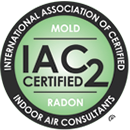Pool Barrier Requirements
While residential outdoor pools are relatively rare in the Treasure State, those adventurous few are starting to take the recent warming trend as a signal to begin preparing their pools for the upcoming season. But beyond the pumps, filters, and chemicals, it’s essential to consider the often overlooked safety features of these backyard oases: pool barriers and access points.
Code regulations regarding barriers surrounding pools and the doors or gates giving access to pool areas are designed to prevent accidents—particularly among children—and are a key part of responsible pool ownership. Let’s dive in.
Key Barrier Requirements:
- Minimum Height: Barriers must be at least 48 inches high, measured from the finished ground level on the side facing away from the pool.
- Openings and Gaps: Openings must be small enough to prevent the passage of a 4-inch diameter sphere.
- Gates: Access gates must be self-closing and self-latching, with the latching mechanism at least 54 inches above ground.
- Climb-Resistant: Barriers should not have features that facilitate climbing, such as horizontal rails within reach of each other.
Using the Fence and House as Part of the Barrier:
A typical backyard fence can serve as the pool barrier if it meets the height, spacing, and construction requirements. Fences made of wood, metal, or other durable materials must be properly maintained and free of gaps or footholds that would allow a child to climb over or crawl under.
The house itself may also serve as part of the barrier. When one or more sides of the pool are bounded by the home, any exterior doors that provide direct access to the pool area must be secured. According to the code, these doors must be equipped with an alarm that produces an audible warning when the door is opened, or with a self-closing, self-latching device that prevents unsupervised access.








